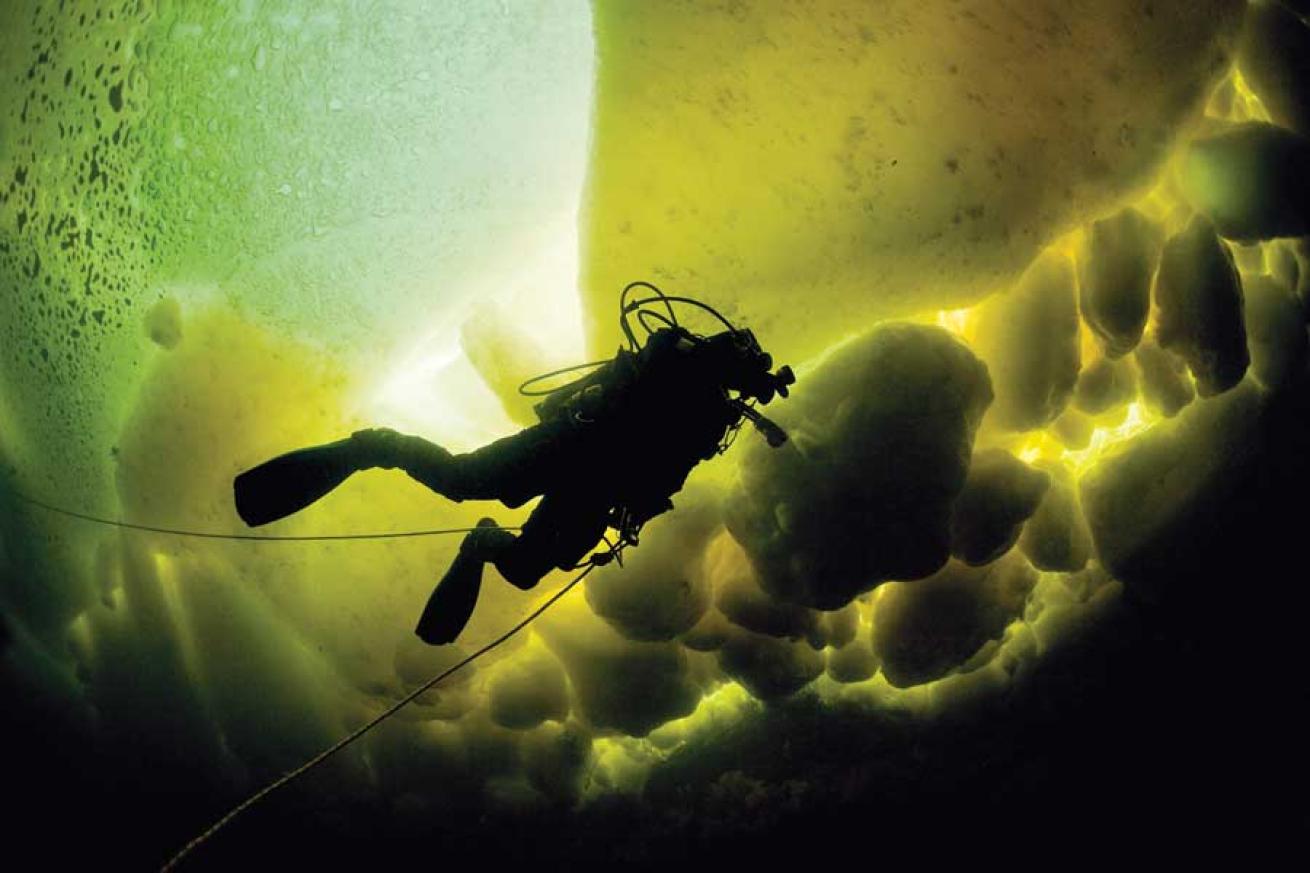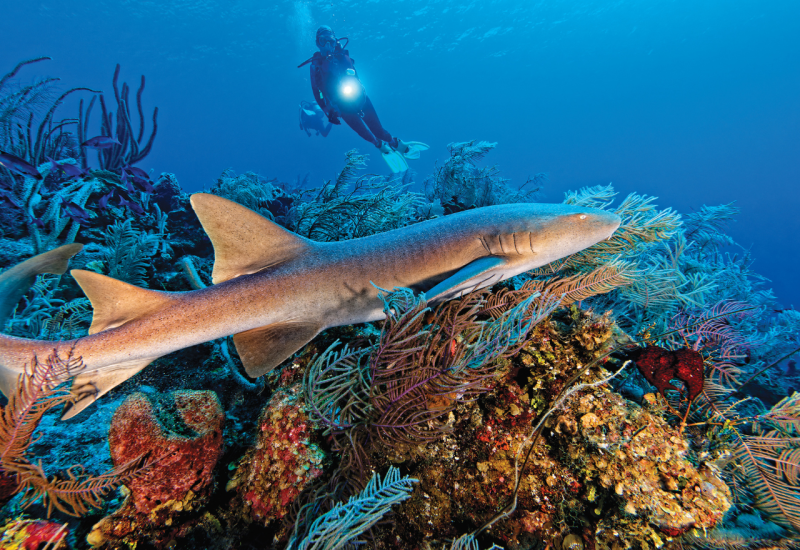What it Takes to Dive Russia's White Sea

Diving Under the Ice in Russia's White Sea
For advanced divers, diving the untouched waters of Russia's White Sea provides the ultimate challenge.
Franco Banfi
What You Need to Know:
Diving in an overhead environment such as Russia’s icy White Sea is not for the claustrophobic. You should have good skills and the ability to remain calm underwater. If this describes you, then you will find an ice-diving trip to the White Sea one of the most memorable diving experiences you could ever hope for.
Diving is on single cylinders equipped with a dual outlet valve, so you will need to have a separate regulator first stage for your octo. Each regulator should have its own contents gauge too; it is good practice to have your BCD inflator attached to one regulator and your dry suit inflator to the other.
ARTICLE: How to Prep Your Regulator
A drysuit with an ice hood and dry gloves are essential. Don’t even contemplate doing ice diving in a wetsuit, no matter how many millimeters of neoprene you are enveloped in.
Only when your face is under water do you place your regulator in your month. If you breathe from it in the minus-20 degree air at the surface, the moisture from your breath will turn to ice in the mouthpiece and cause the regulator to malfunction.
You deflate your BCD/wing and drysuit, exhale gently and ease yourself down and to the side, wedging yourself gently just under the ice shelf both to acclimate yourself to the conditions and do a little gear and gas check, switching regulators, checking both pressure gauges to ensure cylinder valves are fully open. Then after exchanging signals, you and the team set off.
Constant contact is maintained with the line, which is held up and away from the body to avoid entanglement. You always check behind to ensure lines don’t get crossed or caught, and also that the right tension is being maintained. A loose line could mean that something has happened to your tender and that you are all alone. This would be a bad thing as your tender is by far the most important person in the whole operation. He is going to hold onto the line and be your surface communication during the dive; he is going to ensure the maina, or hole, does not ice up while you are down there, and he is the guy who is going to pull your freezing ass out of there if you have a serious problem and need to make an emergency ascent. The tenders we employed from the Arctic Circle Dive Centre, selected by Waterproof Expeditions, were very experienced, impeccably professional, patient and courteous and deserved immense respect and gratitude, as well as perhaps a bottle of vodka or two as a farewell gift!
See ScubaLab's Latest Drysuit Test | Prepping Your New Drysuit | Top 15 Cold-Water Dive Sites | Fire and Ice: Diving in Iceland

Franco BanfiFor advanced divers, diving the untouched waters of Russia's White Sea provides the ultimate challenge.
What You Need to Know:
Diving in an overhead environment such as Russia’s icy White Sea is not for the claustrophobic. You should have good skills and the ability to remain calm underwater. If this describes you, then you will find an ice-diving trip to the White Sea one of the most memorable diving experiences you could ever hope for.
Diving is on single cylinders equipped with a dual outlet valve, so you will need to have a separate regulator first stage for your octo. Each regulator should have its own contents gauge too; it is good practice to have your BCD inflator attached to one regulator and your dry suit inflator to the other.
ARTICLE: How to Prep Your Regulator
A drysuit with an ice hood and dry gloves are essential. Don’t even contemplate doing ice diving in a wetsuit, no matter how many millimeters of neoprene you are enveloped in.
Only when your face is under water do you place your regulator in your month. If you breathe from it in the minus-20 degree air at the surface, the moisture from your breath will turn to ice in the mouthpiece and cause the regulator to malfunction.
You deflate your BCD/wing and drysuit, exhale gently and ease yourself down and to the side, wedging yourself gently just under the ice shelf both to acclimate yourself to the conditions and do a little gear and gas check, switching regulators, checking both pressure gauges to ensure cylinder valves are fully open. Then after exchanging signals, you and the team set off.
Constant contact is maintained with the line, which is held up and away from the body to avoid entanglement. You always check behind to ensure lines don’t get crossed or caught, and also that the right tension is being maintained. A loose line could mean that something has happened to your tender and that you are all alone. This would be a bad thing as your tender is by far the most important person in the whole operation. He is going to hold onto the line and be your surface communication during the dive; he is going to ensure the maina, or hole, does not ice up while you are down there, and he is the guy who is going to pull your freezing ass out of there if you have a serious problem and need to make an emergency ascent. The tenders we employed from the Arctic Circle Dive Centre, selected by Waterproof Expeditions, were very experienced, impeccably professional, patient and courteous and deserved immense respect and gratitude, as well as perhaps a bottle of vodka or two as a farewell gift!
See ScubaLab's Latest Drysuit Test | Prepping Your New Drysuit | Top 15 Cold-Water Dive Sites | Fire and Ice: Diving in Iceland










